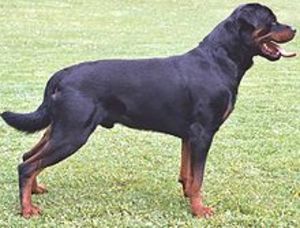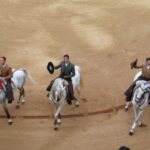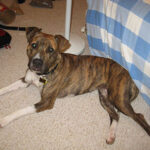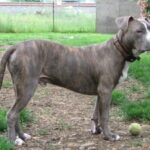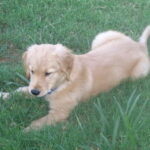Rottweilers or “Rotties” were the pit bulls of the 1980s. They were considered incurably vicious and laws were enacted to ban them from particular towns and cities. Even today, anyone considering bringing home a Rottweiler needs to check with their local laws to be sure they are even allowed to have one. For example, military bases will no longer allow many “aggressive” breeds of dog like the pit bull or Rottweiler.
Those who actually take time to get to know a Rottweiler or Rottweiler-cross will discover that they are basically furry cream puffs. They have a mean bark but often will turn tail from a fight rather than participate in one. Because of the anti-Rottweiler fear of the 1980s, any Rottweiler showing even the slightest hint of aggression was destroyed. Because Rotties are such large and powerful dogs, any over-exuberance may be misinterpreted as aggression.
Brief History
It is unknown just how old the Rottweiler breed is, but they most likely descended from mastiffs from Roman times. They were originally bred to herd cattle and other livestock. One of the breed’s nicknames is “butcher’s dog.” One of the stockyard towns at the end of long cattle droves was Rottweil, in Germany. The dog was also strong enough to pull small loads or carry packs.
Rottweilers were nearly extinct in the 1800s, but breeders in Stuttgart roused public interest in the breed. Since there wasn’t much call to have the dog act in a herding or cart-pulling fashion, it became a guard dog. It did arrive in North America until 1931. Unfortunately, Nazis drafted Rottweilers in World War II. Many North Americans’ first impression of a Rottweiler was “the Nazi dog.” Although Nazis used just about any dog they could get their hands on, Rottweilers somehow have not been able to shake their reputation as fierce war dogs.
General Appearance
Rottweilers vary from dog to dog, with males usually being larger and stockier than females. But even small Rotties are large dogs. Females average 80 to 100 pounds while males can tip the scales anywhere from 80 to 135 pounds. They grow from 22 to 27 inches high at the shoulder.
Rotties are usually black and tan. Very rarely, they are red and brown. Occasionally there is an almost all-black Rottie or one with tiny white markings. However, these do not fit the breed standard and are usually neutered. Because they vary from the breed standard, any Rottie other than a black and tan one cannot be shown and are discouraged from being bred.
Rotties also naturally have a long tail that slightly curves over the back. This tail can often have hair longer than the body hair. For an unknown reason, Germans began docking Rottweiler tails. Perhaps this was to evade a tax or perhaps it was for superstition. Tail docking is banned in most countries, with America being a notable exception. The tails are removed just for cosmetic purposes and to “uphold tradition.”
Additional References
Howell’s Book of Dogs. Liz Palika. Howell Book House; 2007.
Encyclopedia of Dog Breeds. D. Caroline Coile. Barron’s; 2005.
ASPCA Complete Guide to Dogs. Sheldon L. Gerstenfeld, VMD. Chronicle Books; 1999.
